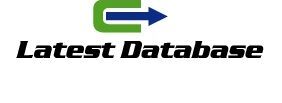- What is email outreach and why is it need? How to Create a Cold Mailing That Will Bring Results.
- Differences between email outreach, email marketing and spam
- Key stages of preparing and conducting an outreach campaign
- When to Stop a Campaign and When to Try to Save
- Legality of email outreach
- Insights and non-obvious moments small business email list when using email outreach: how to increase the effectiveness of mailings
- Meaningful Outreach = Business Growth
Email outreach is one of the most effective business communication tools that allows companies to contact potential clients, partners and investors.
How to launch a successful email outreach campaign? We found out from Polina Kozhevnikova, head of the Outreach Marketing Department at Completo.
What is email outreach and why is it need?
Email outreach is based on the concept of directly reaching out to someone who might be interest in a product, service or partnership.
This tool solves several problems at once:
- Helps to establish initial contact with a potential client or partner.
- Allows you to build trust and gradually engage the recipient in dialogue.
- Serves as the first stage of the sales funnel, especially in the B2B segment, which is characteriz by a long transaction cycle.
- Effective for finding investors, partners and PR collaborations.
Email outreach is especially important for startups, SaaS companies, agencies and B2B services, where cold contact can become the entry point to long-term cooperation.
Differences between email outreach, email marketing and spam
Email outreach is often mistakenly confus it is known for its scalability and adaptability with email marketing and categoriz as spam. However, these concepts are fundamentally different.
- Spam is a mass mailing of irrelevant emails without personalization and the recipient’s consent. Such emails irritate the audience, damage the domain’s reputation and lead to the sender being block.
- Email marketing is working with a warm audience that has already subscribed to the newsletter. Here the emphasis is on informing, warming up and engaging customers.
- Email outreach is personaliz communication with specific people, which is based on audience research and an individual approach.
If an outreach campaign is prepared and implemented correctly, such letters are perceived not as intrusive advertising, but as a useful business proposal.
Key stages of preparing and conducting an outreach campaign
Launching an email outreach campaign requires a comprehensive approach: success depends not only on the quality of the contact base or the correct text of the letter, but also on technical preparation, the chosen sending strategy and subsequent analysis of the effectiveness of the actions.
1. Technical setup: prepare the infrastructure
Before send your first emails, it is important to make sure that your email outreach campaign infrastructure is set up correctly.
Without proper technical preparation, emails may end up in spam or not reach their recipients at all.
Step 1. Register and prepare domains
Using your main corporate domain mobile list for cold mailings is a serious mistake: if mail services consider your emails to be spam, this can negatively affect the reputation of the entire domain, which will lead to problems even with regular business correspondence.
The best option is to use a separate subdomain or register a new domain specifically designed for outreach. This will protect the main domain from possible sanctions from mail services.
It’s important that the new domain looks natural. If it has words like coldemail.com or salespitch.net in the name, it may raise suspicions among recipients and mail filters.
Step 2. Setting up DNS records (MX, SPF, DKIM, DMARC)
Correctly setting up DNS records allows you to convince mail services that the emails you send are actually from your company and not from scammers.
- MX (Mail Exchange) – tells the mail server where to forward incoming mail.
- SPF (Sender Policy Framework) – specifies a list of servers that are allow to send emails on behalf of your domain.
- DMARC (Domain-based Message Authentication, Reporting & Conformance) – defines how email services should handle emails that do not pass SPF or DKIM checks.






